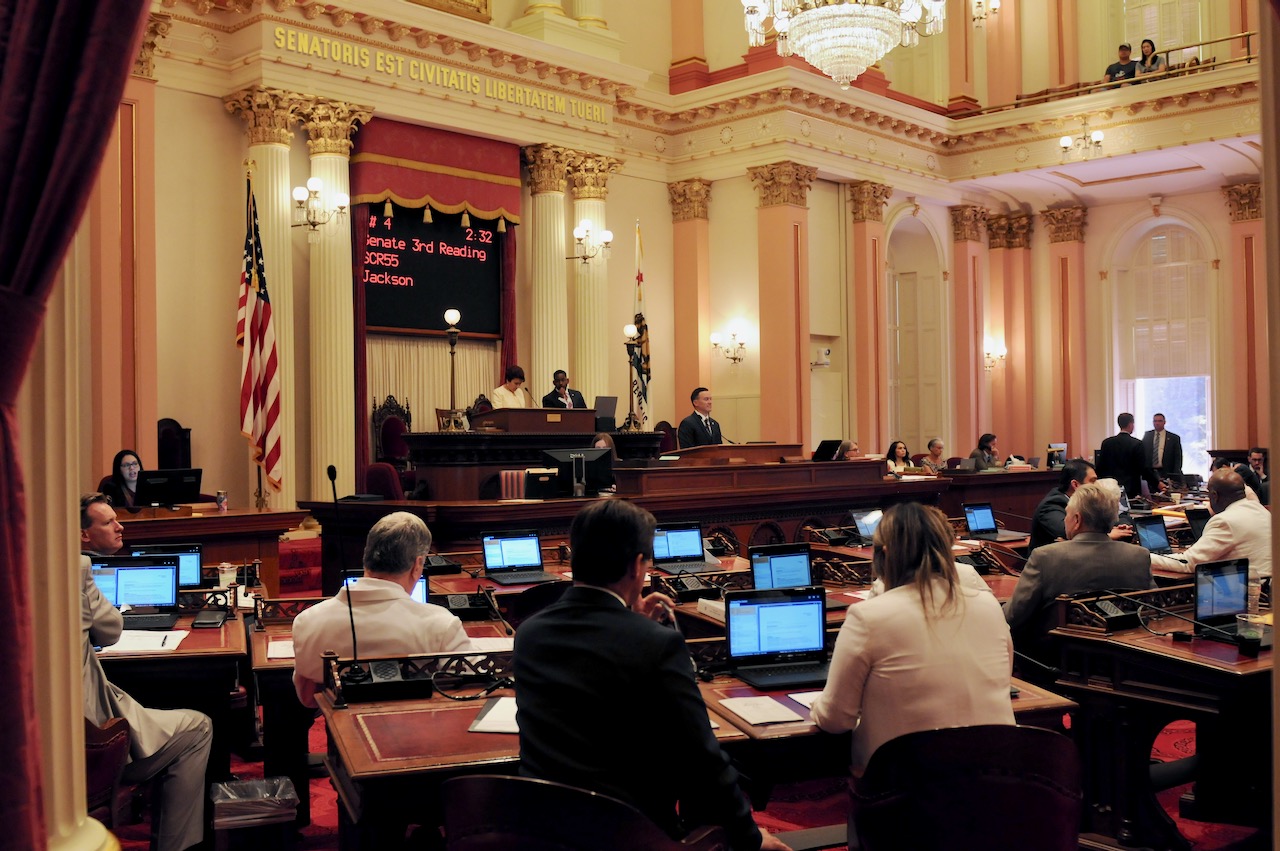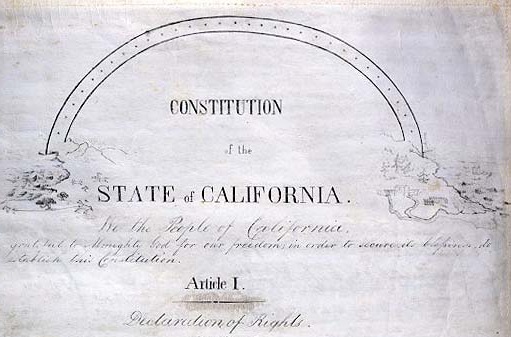
State Capitol . (Kevin Sanders for California Globe)
What Can California’s Governor Do with Legislation on His Desk?
California has a ‘pocket signature’ rule
By Chris Micheli, October 4, 2019 6:05 am
When a bill is passed by the Legislature and sent to the Governor, there are three actions that can occur: (1) sign the bill into law; (2) veto the bill; or (3) allow the bill to become law without a signature (“pocket signature”). The options available to the Governor can be found in Section 10 of Article IV of the California Constitution. Let’s examine each of the options in turn:
Signature by the Governor
Section 10(a) provides in part: “Each bill passed by the Legislature shall be presented to the Governor. It becomes a statute if it is signed by the Governor.” In general, the Governor has 12 days in which to act on a bill sent to him or her from the Legislature. That 12-day period begins once the bill has been “presented” to the Governor, not the day that the bill passed the Senate or Assembly.
The 12-day “signing” period is applicable to all bills that are presented to the Governor twelve or more days prior to the date the Legislature adjourns for a joint recess in the first year of the two-year session, and on or before August 20th of the second year of the Session. The applicable calendar date in the first year is based on the date both houses of the Legislature “consent” to adjourn for the interim recess and is subject to change. This date is set forth in the Joint Rules of the Assembly and Senate.
Section 10(b)(2) provides: “Any bill passed by the Legislature before September 1 of the second calendar year of the biennium of the legislative session and in the possession of the Governor on or after September 1 that is not returned on or before September 30 of that year becomes a statute.”
The recess date (which is August 31) in the second year of the 2-year Session is fixed by the State Constitution. Bills that are passed before September 1 in the second year of the Session and which are in the Governor’s possession on or after September 1 must be signed or vetoed by September 30th of that year or they become a statute without his or her signature.
Any bill passed by the Legislature at a special session, which is in the Governor’s possession on or after the adjournment date of the special session, becomes law unless the Governor vetoes the bill within 12 days by returning the vetoed bill to the office of the Secretary of the Senate or the Chief Clerk of the Assembly.
When the Governor approves a bill, he or she signs it, dates it and deposits it with the Secretary of State. This copy is the official record and law of the state. The Secretary of State assigns the bill a number known as the “chapter number.” The bills are numbered consecutively in the order in which they are received and the resulting sequence is presumed to be the order in which the bills were approved by the Governor.
There is only one sequence of chapter numbers maintained for each year of the regular session of the Legislature. As a result, the numbers do not continue in the second year of the Session. In addition, a separate set of chapter numbers is maintained for each special session.
Veto by the Governor
Section 10(a) provides in part: “The Governor may veto it by returning it with any objections to the house of origin, which shall enter the objections in the journal and proceed to reconsider it. If each house then passes the bill by rollcall vote entered in the journal, two-thirds of the membership concurring, it becomes a statute.”
When the Governor vetoes a bill, he or she returns it, with his or her objections to the bill, to the house of origin. The house of origin may consider the veto immediately or place it on the “unfinished business file.” The Legislature has 60 calendar days, with days in joint recess excluded, to act upon the vetoed bill. If no action has been taken during this time, then the measure is removed from the file and the veto is effective.
Veto overrides are rare. The Legislature has not overridden a Governor’s veto since 1979. The result of sustaining the Governor’s veto or failing to consider it in the time allotted is to “kill” the bill or to reduce or eliminate the appropriation as recommended by the Governor. If two-thirds of the elected Members of each house disagree with the Governor, the bill as passed by the Legislature becomes law notwithstanding his or her objections.
When the Legislature successfully overrides a Governor’s veto, the bill, or items of appropriation are authenticated as having become law by a certificate. The bill or statement so authenticated is then delivered to the Governor, and by him or her deposited with the laws in the office of the Secretary of State. Bills deposited in the office of the Secretary of State are given a chapter number in the same manner as bills approved by the Governor.
Line-Item Vetoes
Section 10(e) provides: “The Governor may reduce or eliminate one or more items of appropriation while approving other portions of a bill. The Governor shall append to the bill a statement of the items reduced or eliminated with the reasons for the action. The Governor shall transmit to the house originating the bill a copy of the statement and reasons. Items reduced or eliminated shall be separately reconsidered and may be passed over the Governor’s veto in the same manner as bills.”
If a bill presented to the Governor contains one or several items of appropriation, he or she may eliminate or reduce any or all of those items while approving the other portions of the bill. When the Governor utilizes this “item veto,” he or she appends to the bill, at the time of signing it, a statement of the items to which he or she objects and his or her reasons therefor. A copy of this statement is then transmitted to the house in which the bill originated. The items then may be separately reconsidered and the vetoes sustained or overridden in the same manner as bills which have been vetoed by the Governor.
Allowed to Become Law without the Governor’s Signature
Section (10)(b)(1) provides: “Any bill, other than a bill which would establish or change boundaries of any legislative, congressional, or other election district, passed by the Legislature on or before the date the Legislature adjourns for a joint recess to reconvene in the second calendar year of the biennium of the legislative session, and in the possession of the Governor after that date, that is not returned within 30 days after that date becomes a statute.”
Section (10)(b)(3) provides: “Any other bill presented to the Governor that is not returned within 12 days becomes a statute.”
California has a “pocket signature” rule. If the Governor does not act on the measure within the allotted time, then the bill becomes law without his or her signature. This is the exact opposite of the federal process. In other words, the U.S. President has a “pocket veto,” which means that, if he or she does not act on a bill within the requisite period of time, then the federal bill is vetoed.
- Affidavits in California - January 3, 2026
- Statewide Child Support Registry - January 2, 2026
- Foreign Country Money Judgments - January 2, 2026





One thought on “What Can California’s Governor Do with Legislation on His Desk?”